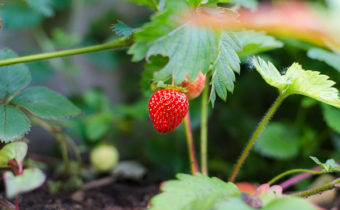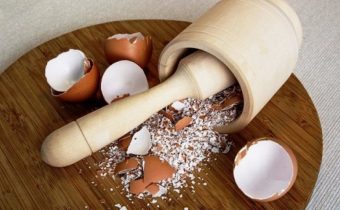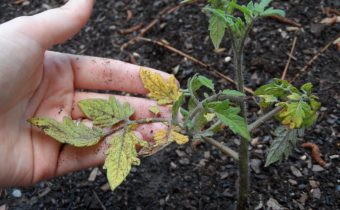10 ways to protect tomatoes from a bear
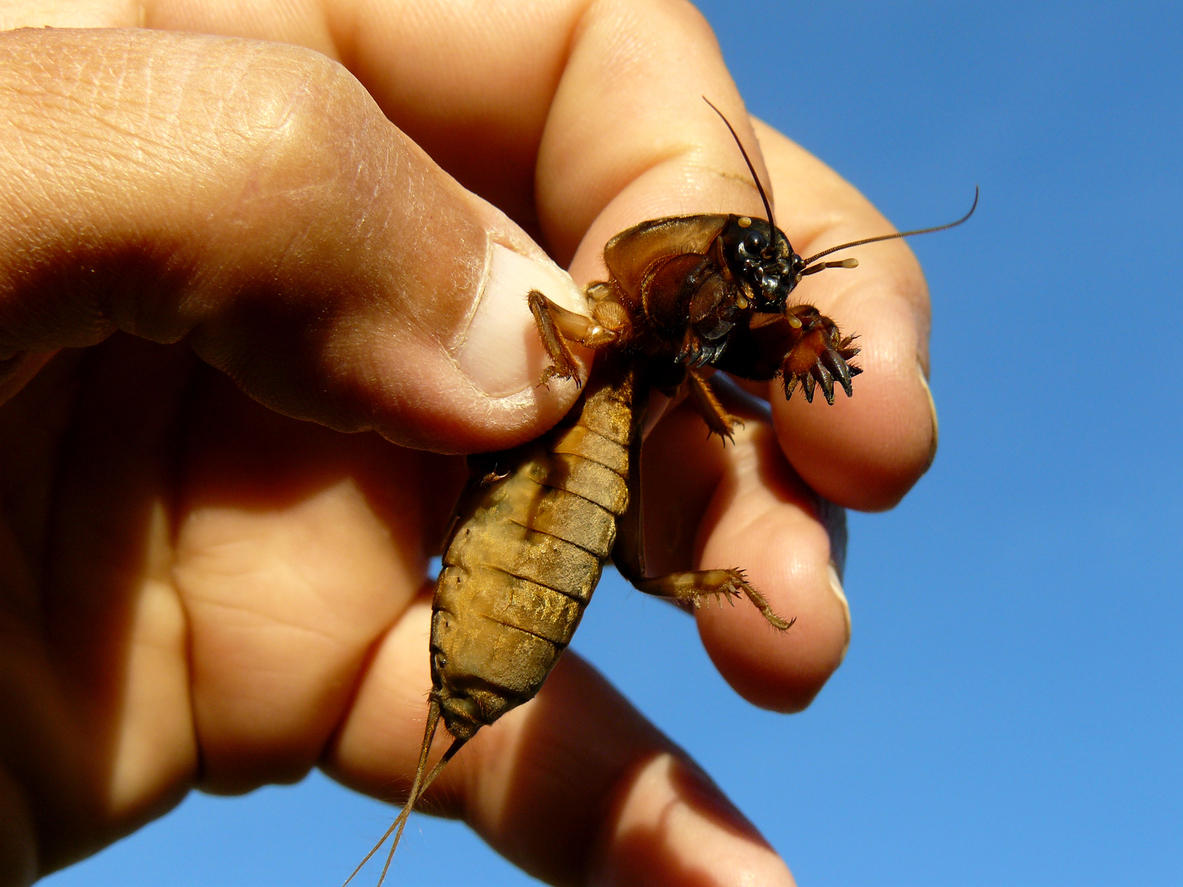
Medvedka almost always lives in the ground, only getting out of the shelter at night and flying around the garden area to conquer new territory. To fight the annoying insect is extremely difficult. This is due to the secretive lifestyle of the pest and the inability of insecticides to get to it through a thick soil layer.
What is dangerous Medvedka
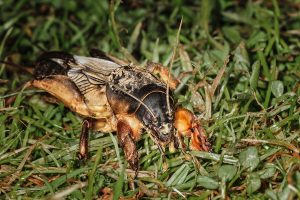 Most often this small flying creature attacks gardens with good manured, fertile, moist and aerated soil. To overestimate the damage from sabotage wrecking is difficult. It can damage all the landings in just a few days. Medvedka is not afraid of either large areas, or specialized poisons, or birds. If she managed to breed, it is almost impossible to get rid of her, and you will have to say goodbye to the harvest.
Most often this small flying creature attacks gardens with good manured, fertile, moist and aerated soil. To overestimate the damage from sabotage wrecking is difficult. It can damage all the landings in just a few days. Medvedka is not afraid of either large areas, or specialized poisons, or birds. If she managed to breed, it is almost impossible to get rid of her, and you will have to say goodbye to the harvest.
Medvedka must be fought as soon as she appeared in the garden. It is possible to identify an intruder on the ground - these are the tunnels along which the insect moves. Living under the ground, where it is dark and warm, she eats the roots of tomatoes, thereby affecting the entire plant as a whole.
Medvedka very picky in their culinary preferences. By sweeping away everything in its path, she will never touch the weeds.
The severity of the fight with Medvedka lies in its natural ability to adapt to any climatic conditions. It quickly multiplies, hides deep in the ground, and the larvae can safely winter in the remains of plants. She develops immunity to many poisons, so various methods should be used in the fight against her, alternating them or using them in a complex manner.
Gardeners, trying to remove the parasite from their plots, invented dozens of methods to help catch the little dirty dog. Here are some of them, proven and time, and action.
The pest likes to hide in dung heaps, lay eggs in them, and hibernate. Dung bait can be built in the fall, after cleaning the site. To do this, scatter the manure on the excavated earth, leaving organic matter on the surface. In winter, the eggs of the bearheads, which were laid in manure, will die from the cold.
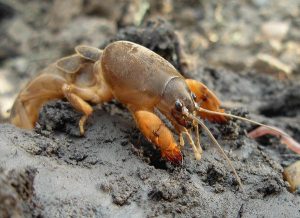 In the spring, manure heaps are arranged locally in certain parts of the garden. Organics are placed on polyethylene (it will be easier to remove it along with insects from the site). For 2-3 weeks, a warm “home” will attract Medvedok from around the garden. As soon as the dung heap collects a large amount of insect polyethylene is tied into a knot and removed from the garden. By the way, the use of polyethylene, linoleum as a substrate for manure is also useful because the bears will not be able to "escape" from such a trap under the ground.
In the spring, manure heaps are arranged locally in certain parts of the garden. Organics are placed on polyethylene (it will be easier to remove it along with insects from the site). For 2-3 weeks, a warm “home” will attract Medvedok from around the garden. As soon as the dung heap collects a large amount of insect polyethylene is tied into a knot and removed from the garden. By the way, the use of polyethylene, linoleum as a substrate for manure is also useful because the bears will not be able to "escape" from such a trap under the ground.
The use of protective shelters
One of the simplest, but fairly effective methods is the use of shadow traps in the garden. They are pieces of plywood, slate, roofing material, linoleum of dark tones. They are laid out on the site and waiting for the insects to gather under them, looking for shelter. Under such a roof it is warm, quiet and safe, and if you make a small depression in the ground and throw rice or pearl-barley porridge there, it is also delicious.To open such a trap should be quickly and without noise, otherwise the insects will have time to hide in the depths of the soil.
Beer fishing
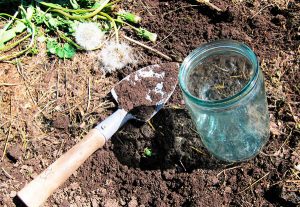 Summer residents often use beer traps, because they know that the alcoholic drink on the bear acts like a valerian on cats. In the spring, approximately in the middle of May, plastic bottles are instilled into the ground next to the rows of tomatoes so that the neck is almost level with the surface (the bottle is set at an angle). The container is filled with beer, and the neck is covered with gauze moistened with alcohol. Medvedka from afar will smell the yeast and hops, and immediately gather to the table from all over the garden. Gnawing a cloth, she falls into the pub and can no longer climb out. For a couple of weeks, about 9-12 adults fall into the sweet trap. As soon as the bottle is filled, they dig it up, destroy the pests, pour in fresh beer and continue collecting insects.
Summer residents often use beer traps, because they know that the alcoholic drink on the bear acts like a valerian on cats. In the spring, approximately in the middle of May, plastic bottles are instilled into the ground next to the rows of tomatoes so that the neck is almost level with the surface (the bottle is set at an angle). The container is filled with beer, and the neck is covered with gauze moistened with alcohol. Medvedka from afar will smell the yeast and hops, and immediately gather to the table from all over the garden. Gnawing a cloth, she falls into the pub and can no longer climb out. For a couple of weeks, about 9-12 adults fall into the sweet trap. As soon as the bottle is filled, they dig it up, destroy the pests, pour in fresh beer and continue collecting insects.
Scaring off smells
Some plants have such a smell that the bear cannot move it and quickly retreats from the site. Averts pests marigolds, coriander, spruce and pine branches (needles). Planted around the perimeter of the garden. The needles are placed in the wells when planting tomato seedlings. Under the ground, the needles retain their fragrance for a long time, which scares the living creatures.
Does not like the bear and the smell of rotten fish, garlic, onion peel, nut leaves. If these components are provided with land when planting tomatoes, the insect will bypass this place.
Medvedka does not tolerate the smell of iodine. When planting seedlings on the bed it is recommended to shed the holes with iodine solution.
Oil trap
 A very simple and effective way to destroy adults. It is very easy to find the minks in which insects live - they can be found in the hole when planting tomatoes, next to the bushes, between the beds. If lazy is detected, it is necessary to fill in the entrance to the “house” with sunflower oil. Oil plug will not allow Medvedka to breathe, from which she will quickly die. Well, if she still manages to climb out, then it will be easy to destroy manually. Consider that oil may need a lot, especially if the hole is deep and the ground is dry.
A very simple and effective way to destroy adults. It is very easy to find the minks in which insects live - they can be found in the hole when planting tomatoes, next to the bushes, between the beds. If lazy is detected, it is necessary to fill in the entrance to the “house” with sunflower oil. Oil plug will not allow Medvedka to breathe, from which she will quickly die. Well, if she still manages to climb out, then it will be easy to destroy manually. Consider that oil may need a lot, especially if the hole is deep and the ground is dry.
It is also possible to pour kerosene diluted with water into the mink. Either kerosene mixed with sand and spread the resulting substrate in the aisle.
Poison bait
Insects can be harvested using ordinary cereal. To do this, boil corn, wheat, barley, cake, add metaphos. The poison is thoroughly mixed with food, then poured into the mixture of sunflower oil. Porridge spoon spread under the dunded heaps. These baits are best used before planting seedlings or before the onset of flowering plants. Karbofos can also be added to cereals. Such a treat is to the liking of the pest, so Medvedka will quickly lure the whole horde of parasites, which will be easy to assemble and destroy.
Ammonia treatment
 Ammonia diluted in water with its sharp aroma is able to permanently discourage the pest's desire to appear next to a tomato bed. The treatment is carried out as follows: small grooves are made around the plants, then the pistil is surrounded with concentrated ammonia. It is important in this process not to soak the tomato bush itself.
Ammonia diluted in water with its sharp aroma is able to permanently discourage the pest's desire to appear next to a tomato bed. The treatment is carried out as follows: small grooves are made around the plants, then the pistil is surrounded with concentrated ammonia. It is important in this process not to soak the tomato bush itself.
Medvedku repels not only the smell of ammonia, but also an increased dose of nitrogen in the soil. Such a method of getting rid of the pest is permissible only in the first part of the growing season of tomato bushes, since then excess nitrogen can cause a delay in flowering and fruit formation.
Another way to use ammonia is to stick a cotton wool soaked in ammonia into the ground next to the bushes.
The use of natural enemies
Natural enemies of the garden dirty dog are birds (rooks, crows, herons), insectivorous animals (hedgehogs, lizards, moles, shrews), insects (ants, ground beetles, nematodes), flying insects (wasp Larra). By the way wasps are most effectively destroy the bear.They find manholes in the ground, expel insects from them, and sting them, paralyzing the victim.
You can lure birds and insects to the site with the help of sweet baits. However, it is necessary to take into account the fact that, for example, shrews and moles can usefully bring harm to the garden by digging up all the earth and damaging the roots of vegetable plants.
Windmills against the bear
 Surprisingly, the bears are afraid of any, even fleeting noise, and try as quickly as possible to leave the place where it is uncomfortable to live. Create different sounds on the site is easy. To do this, around the perimeter of the garden (at a distance of 10 meters from each other) install high iron pipes with a small diameter. To the tops of the tubes attached propellers of plastic or other metal. The main thing is that even a weak wind could easily create their rotation. The arising vibration is perceived by the bears quite clearly - they associate noise with danger. The colony quickly leaves the site in search of a quieter habitat.
Surprisingly, the bears are afraid of any, even fleeting noise, and try as quickly as possible to leave the place where it is uncomfortable to live. Create different sounds on the site is easy. To do this, around the perimeter of the garden (at a distance of 10 meters from each other) install high iron pipes with a small diameter. To the tops of the tubes attached propellers of plastic or other metal. The main thing is that even a weak wind could easily create their rotation. The arising vibration is perceived by the bears quite clearly - they associate noise with danger. The colony quickly leaves the site in search of a quieter habitat.
Aspen stake
This old method is still used because of its incredible efficiency. The fact is that Medvedka sickened the smell of aspen wood. To catch an annoying insect around the perimeter of a large area of the enemy, fresh aspen (or alder) pegs are stuck into the ground at a distance of 60-100 centimeters from each other. The pest cannot stand close proximity to aspen and there is nothing left for him but to escape from the dangerous area.
Modern methods
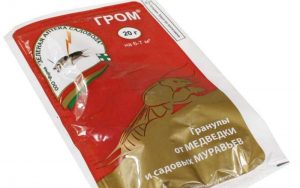 If you have been using all sorts of folk remedies for years, and the pest is not going to leave the dacha, then you should use heavy artillery - chemical means against it. The essence of the work of insecticides is as follows: insects eat poison, which affects them from the inside. Soon the bear is dying. By the way, the wire is destroyed along with it.
If you have been using all sorts of folk remedies for years, and the pest is not going to leave the dacha, then you should use heavy artillery - chemical means against it. The essence of the work of insecticides is as follows: insects eat poison, which affects them from the inside. Soon the bear is dying. By the way, the wire is destroyed along with it.
It is more correct to start fighting with a medvedka during planting. To do this, the roots of tomato saplings are treated with Aktar or Prestige 290 FS. During the growing season apply effective Medvetoks. It is introduced into the soil between the beds during watering.
The most effective remedies against the bear:
- Thunder - drug scattered mink. Medvedka eats a poisonous bait and dies.
- Bankol - affects the insect's nervous system, paralyzes it. The drug is safe for humans and animals, does not accumulate in fruits and soil.
- Phenaxin Plus - sweet granules attract the smell of a pest. After a tasty meal, the insect dies in a matter of hours.
- Grizzly - effectively fights with larvae and adults. The preparation is treated with a plot, after which in a day all pests in the ground die.
- Bowerin - the preparation contains a fungus dangerous for the bear. The tool is mixed with sunflower oil and watered the wells when planting seedlings. Insects crawl out of the ground, they can be collected and destroyed outside the site.
In the spring, most insects die as a result of fungal diseases.
Prevention of the appearance of a bear on the site
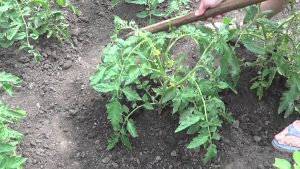 Frequent planting, weeds, the use of fresh manure, improper watering - all this is the cause of the increased interest of the bear in garden plantings. However, if you remain vigilant, carry out farming in accordance with the rules, using clever folk methods, the number of insects in the garden can be significantly reduced.
Frequent planting, weeds, the use of fresh manure, improper watering - all this is the cause of the increased interest of the bear in garden plantings. However, if you remain vigilant, carry out farming in accordance with the rules, using clever folk methods, the number of insects in the garden can be significantly reduced.
Prevention measures:
- it is necessary to carry out deep loosening regularly. It is especially important to do this at the end of May, when there are still eggs and hatched larvae in the ground. Once on the surface, they die;
- Mulching of the land under the bushes will prevent the bear's reproduction, since under the thick layer of mulch an unfavorable climate is created for the insect;
- the addition of poisonous preparations during soil loosening will contribute to the extinction of a large number of bears in the soil layer;
- to protect your garden from the invasion of a cedar from a nearby plantation, you can use an iron fence dug to a depth of 50-60 centimeters;
- Since Medvedka averts chicken droppings, it is a good idea to regularly treat the plantations with an aqueous solution based on it. And in addition to spraying, it is recommended to pour a mixture of chicken manure into mink.
Conclusion
Medvedka is dangerous not only for tomatoes. She eats everything that comes her way - cucumbers, eggplants, potatoes and many other vegetable crops suffer from her wrecking. Plants affected by it, in most cases, die. It is better to fight with Medvedka using an integrated approach, using 3-4 methods at once. So that all efforts are not in vain, neighbors should also get rid of the insect. Only together can you defeat this insidious insect and save the harvest.


